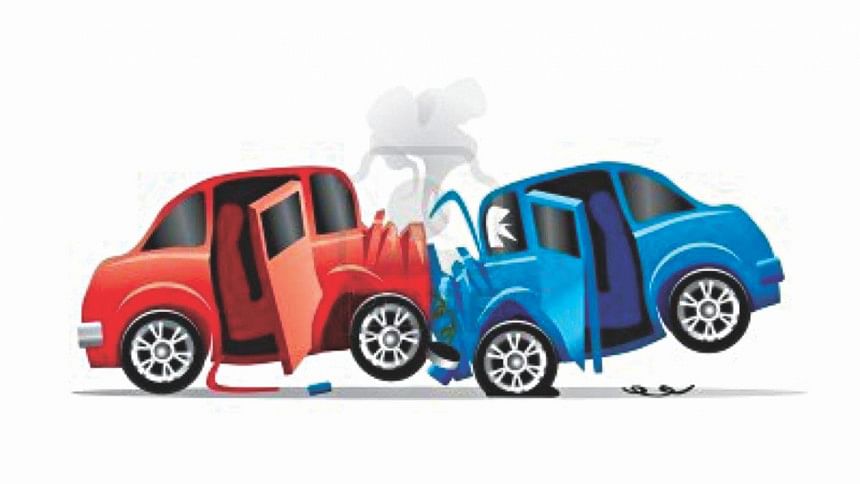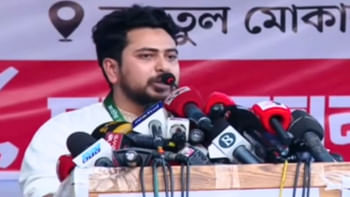Assessing compensation in road accident cases

In Bangladesh, everyday serious accidents occur due to rough, speedy and reckless driving of bus and truck drivers. These accidents cause deaths and injuries to many innocent people. In most cases, the victims remain silent and their miseries remain unattended. The guideline for determining compensation in road accident cases, except for a very few principles, has remained hugely untraced.
In Bangladesh Beverage Industries Ltd. v Rowshan Akhter and others 62 DLR (HCD) 483, plaintiffs, who were the wife and two minor sons of the deceased, filed a Money Suit claiming in total Taka 3,52,97,000 as compensation for the death that happened as a result of an accident. An amount of taka 2,01,47,008 was awarded by the Court in that case.
The Court was of the view that the plaintiffs are entitled to the compensation for suffering of pain ensuing from the untimely loss of their dear one. Reliance was put on the case of N Rakshit v Bhadreswar Municipality 73 CWN 88, which paved the way for awarding damages to address as well as redress the pain, agony anguish, suffering and loss of expectation of life. With regard to the question as to whether the damages would be calculable or would be awarded lump sum, the courts view was that love, affection, paid, suffering, mental agony, physical incapability, are not calculable and therefore, if the Court is satisfied that the plaintiffs should be paid compensation, that can only be awarded in lump sum.
In the case of Ehsan Ali v Karachi Road Transport Corporation 20 (1968) DLR (HCWP) 226, a railway engine hit the bus, causing injury to several bus passengers in railway crossing at Karimabad. In that case, the question arose as to what compensation the plaintiff should consequently receive from the defendants. In this connection, the Court relied on the decisions cited by Kemp & Kemp in “The Quantum of Damages”, (Vol. 1, Second Edition). In the case of Boyle v Consett Iron Co. Ltd. cited at page 413, the Court of Appeal awarded £800 as damages for fracture of pelvis, damage caused to the right hip and the left lung. In the Supplement to the Second Edition, there is reference, at page 17, to the case of Chambers v British Railway Board, where the plaintiff was awarded £11,000 as general damages on account of injuries to right shoulder and right and left ankles, left hip and kidneys. Further reliance was made in Suit No. 8 of the 1960 decided by the same Court by judgment dated 16th February 1967, where the plaintiff, Suraya Hafeez, was given Rs 15,000 as compensation for various injuries, which included lacerated wound 2” x ¼” muscle deep on left leg, abrasion ¼” in diameter on right elbow, abrasion 11/2” diameter on right shoulder. All these decisions gave guidance in the assessment of compensation in the case of Ehsan Ali.
The Court in Bangladesh Beverage Industries Ltd. case observed that assessment of damages in such a case must, therefore, necessarily be to some extent of a rough and approximate nature based more or less on guess work, for, it may well be impossible to accurately determine the loss which has been sustained by the death of a husband, wife, parent or child. The court further expressed that no definite or hard and fast rule can, as such, be laid down as to the matters which should be taken into account. But this much can be said that only such damages can be given as can be shown to have been financially suffered by those who bring the action.
In estimating such damages the Court will, no doubt, take into account the age of the deceased, his or her health, earning capacity. There must however, be evidence of “reasonable expectation of pecuniary advantage” and not of a “mere speculative possibility”. Thus, parents may recover for the loss of the probability that the deceased child would have contributed towards their maintenance and children may recover for the loss of education, comfort and position in society which they would have enjoyed if the father had lived and maintained the income which had died with him. The basis of the assessment is not the requirement of plaintiff but the money value of the assistance which the deceased might probably have given, had he continued to live.
Bangladesh Beverage Industries Ltd. case has enunciated principles for guiding the judges and also is a landmark case in the realm of tort law in the country. Law is there to help the misfortunes who either lose their near ones and/or fall victim to ghastly accidents or suffer injuries themselves.
The writer is an Advocate, Supreme Court of Bangladesh.

 For all latest news, follow The Daily Star's Google News channel.
For all latest news, follow The Daily Star's Google News channel. 



Comments